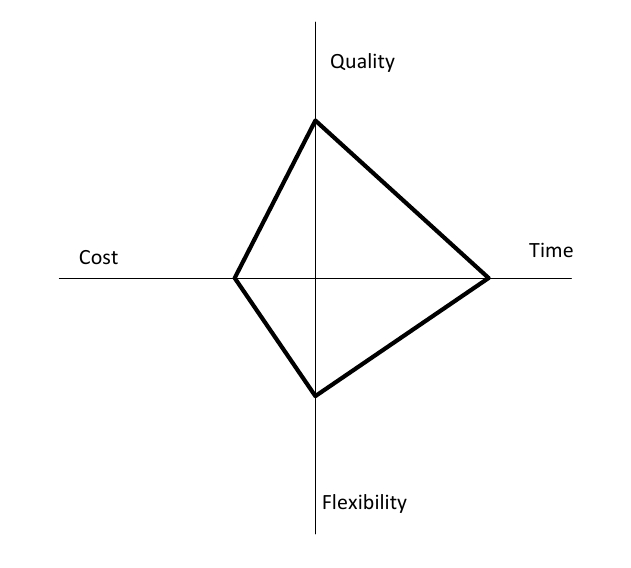8.1 The essence of Process Redesign
- Motivations and trade-offs of redesign.
Why Redesign?
Business process redesign is about improving the quality of products/services by rethinking and re-organizing business processes.
- If someone wants to improve the quality of a product/service from the perspective of a customer, the best way to go is to improve the related business process.
- A customer-oriented organization becomes a process-centered organization.
Why would anyone like to redesign business processes?
- All business processes evolve over time. (organic nature)
- People who do the day-to-day operations are usually not inclined or equipped to start rethinking the overall processes.
- People who do the day-to-day operations usually only know the activity they do, and before and after them.
- Even managers are more concerned with the day-to-day execution than structural improvement.
- The world evolves.
- New competitors
- Different preferences of customers.
- So when there is still a strategic incentive to keep offering a product or service, the best way to keep competitive is to do a process redesign.
- All business processes evolve over time. (organic nature)
What is redesign?
- Redesign = Any change to an existing progress.
- Framework of items to think about with process redesign
- The Customers of the business process (internal or external)
- The Business Process Operation view:
- How a business process is implemented.
- The number of activities that are identified in the process.
- The nature of the activities.
- The business process behavior view:
- How a business process is executed.
- In which order activities are executed .
- How the activities are scheduled and assigned for execution.
- The organization and the participants in the business process:
- Organization structure (elements: roles, users, groups, departments, etc.)
- Organization population (individuals who can execute activities)
- The information that the business process uses or creates.
- The technology the business process uses.
- The external environment the process is situated in.
- Process redesign extends to:
- Processes
- Organizations
- External environment
- Information
- Technology
- Products delivered to the customers
- Process redesign excludes activities such as training people for their new/edited activities.
- Not each business domain is equally suitable for (application/business) process redesign
- Manufacturing domain: transforming raw materials to products using robots an sophisticated machinery.
- Services domain: Mostly knowledge is involved in the processing of information to deliver a particular service.
- Properties of service organizations:
- Making a copy is easy and cheap (on paper or electronically).
- No limitations on the in-process inventory (stored in a database, require not much space).
- Less requirement with respect to the order in which activities are executed
- Quality is difficult to measure.
- Quality of end products may vary.
- Transportation of electronic data is timeless.
- More freedom in redesigning a business process in the services domain than the manufacturing domain.
The Devil`s Quadrangle

- Available directions for improvement
- Time (lower is better)
- Cost (lower is better)
- Quality (higher is better)
- Flexibility (higher is better) (How a process can deal with variation)
- Improving one property can decrease another.
- Ex. Doing something what increases quality, adds more time to the production.
- Redesign Heuristics = Common approaches to improve business processes.
How to redesign?
- Levels of abstraction for methods for process redesign
- Methodologies
- collection of problem-solving methods with principles and a common philosophy.
- Field of consulting firms which developed these.
- Techniques
- Precisely described procedures for achieving a standard task.
- Ex. Fishbone diagram, pareto analysis etc.
- Redisigning/ creativity techniques
- Ex. Brainstorming, flowcharting, data modeling, role-playing, simulation etc.
- Tools
- A computer software package to support one or more techniques.
- Methodologies
- Intensity of a methodology = Pace that one aims with changing the process.
- Starting point of the redesign effort:
- OPTION A: Start from scratch
- Easyer to get rid off the inefficiencies in the current process.
- Better chance to create a new truly innovative process alternative.
- OPTION B: From traits of the existing process that is to be redesigned
- Most popular approach
- No need to cover all exceptions, or to forget steps.
- Level of detail is already inplemented.
- OPTION C: Use a good general design (Reference Model)
- Use of a blueprint or reference model.
- Developed by consultancy and IT companies
- Gives an up to date and standardized view on how to carry out a business process.
- OPTION A: Start from scratch